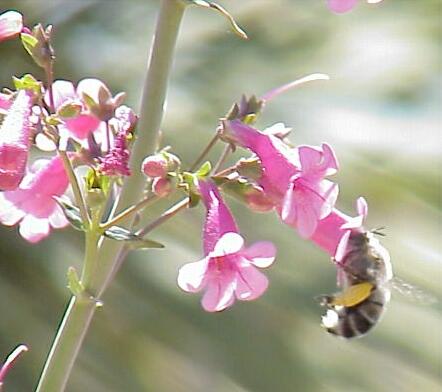|
There are many hundreds of different types of bee in the Sonoran Desert alone. They play important roles in pollination of plants, and sometimes are quite specific in the plants that they visit. For example, there is a special group of cactus bees, specialised for this plant group. Bees forage for both nectar - a rich source of energy - and pollen, which contains up to 50% protein and is a major resource for raising the brood. Many desert bees form very small colonies - often only a solitary female and her brood. They nest in holes in the soil or in crevices or dead plant stems. In this respect they contrast with honey bees (hive bees), such as the introduced European bee (a vital pollinator of many crop plants) and the Africanised bee (commonly known as the "killer bee" because of its extremely aggeressive behaviour).
The Africanised bee was introduced from South Africa into Brazil in 1956, based on reports from South Africa that it could give superior honey yields in subtropical and tropical climates. It escaped from quarantine and rapidly spread across much of Central America, and even into the southern states of the USA. This misguided introduction of a foreign bee has had major economic and social consequences. See, for example:
|

